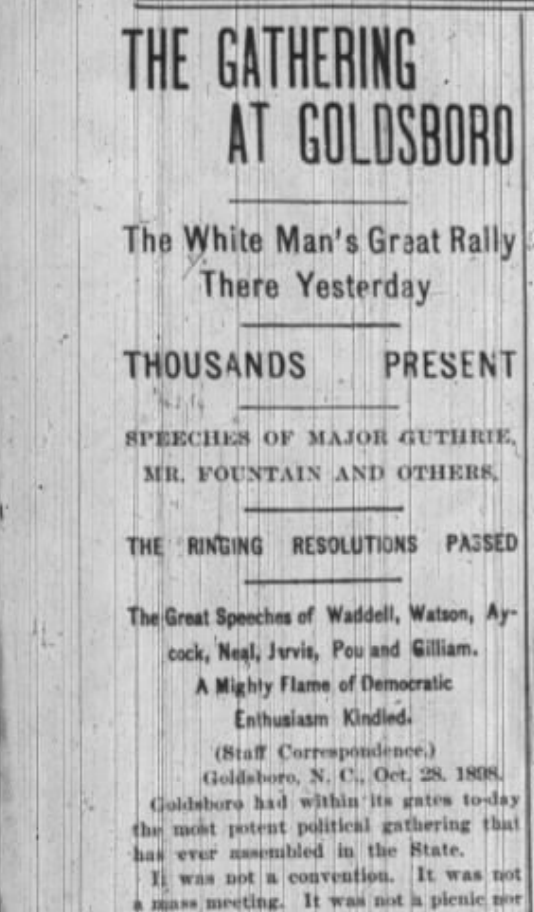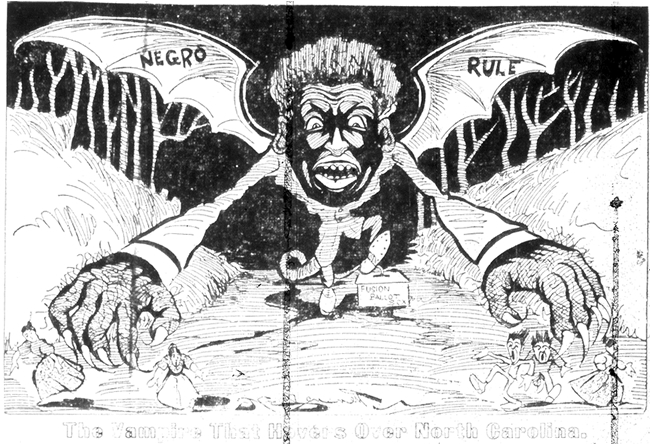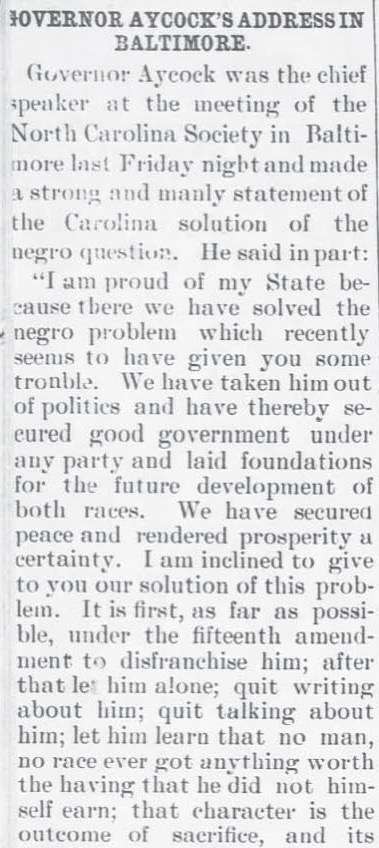A thread about the dorm I lived in my sophomore year at UNC.
1/ In October 1898, about 10,000 people from across the Southeast flooded into Goldsboro, NC for a “White Supremacy Convention.” https://twitter.com/UNC/status/1273257312262684672">https://twitter.com/UNC/statu...
1/ In October 1898, about 10,000 people from across the Southeast flooded into Goldsboro, NC for a “White Supremacy Convention.” https://twitter.com/UNC/status/1273257312262684672">https://twitter.com/UNC/statu...
2/ White supremacists had a problem: Wilmington was thriving, thanks to black teachers, journalists, politicians and more. The election of 1898 was only days away, and they needed to mobilize their base, fast, if they were going to suppress black economic and political growth.
3/ Up on stage that night at the convention was Charles Aycock. He was determined to unite the crowd behind a common cause: “independence from corrupt, incompetent and arrogant negro control," as the N&O put it the next day.
4/ Raleigh’s News and Observer reported it was “one of those gatherings that inspires, that thrills, that stirs the minds of men” — a “mingling together of white men, brave men… all joining in one earnest appeal for the supremacy of the Anglo-Saxon race in North Carolina."
5/ Smaller white supremacy events across the state precipitated this one, and newspapers also contributed to the anti-black rhetoric intensifying in the months leading up to the election (this cartoon ran in the N&O in Sept, 1898).
6/ But something about this event was different. People left feeling invigorated by the anti-black provocations of the evening, and took near-immediate action, ambushing black citizens across the Southeast, kidnapping and whipping them in the night, destroying their property.
7/ The rally was so rousing, in fact, that eleven days later — election day, November 8 — white supremacists clogged the streets of Wilmington to suppress black voter turnout. Black people who ventured out to vote despite the mobs were targeted by gunfire.
8/ And then, two days after the election, massacre. White supremacists stormed Wilmington, torching black businesses and murdering black lives. They overthrew the city’s black elected officials.
Nov. 10, 1898: the Wilmington massacre, our nation& #39;s only coup d& #39;etat.
Nov. 10, 1898: the Wilmington massacre, our nation& #39;s only coup d& #39;etat.
9/ Back to Aycock. He was heralded as one of the most prominent organizers behind the "frenzy over white supremacy victory" in the South — “the matchless Aycock.”
10/ Three years later, in 1901, he was elected governor of North Carolina. His campaign was fueled by appeals to white superiority and the disenfranchisement of black voters. One if his most troubling speeches — and he has many — is about “The Negro Problem”:
11/ "I am proud of my State, moreover, because there we have solved the negro problem...We have taken him out of politics and have thereby secured good government under any party and laid foundations for the future development of both races.”
12/ At the beginning of my sophomore year at UNC, I moved into the Aycock Residence Hall. It’s been a few years, but if I remember correctly, there was a plaque right when you walk in with a brief biography of Charles B. Aycock. None of this history is a secret.
13/ So the fact that this conversation has been on hold for so long is devastating. The fact that black students at UNC are asked to go to bed every night in buildings like Aycock, named after men whose careers were fueled by black destruction and death, is devastating.
14/ Read about Wilmington in the 1800s; learn about black flourishing and not just black persecution. Read about Aycock. Read about every other building on UNC’s campus named after men whose racist outlooks were just like his. Here’s a map: http://unchistory.web.unc.edu/ ">https://unchistory.web.unc.edu/">...
15/ Today is so important, and long overdue.

 Read on Twitter
Read on Twitter




